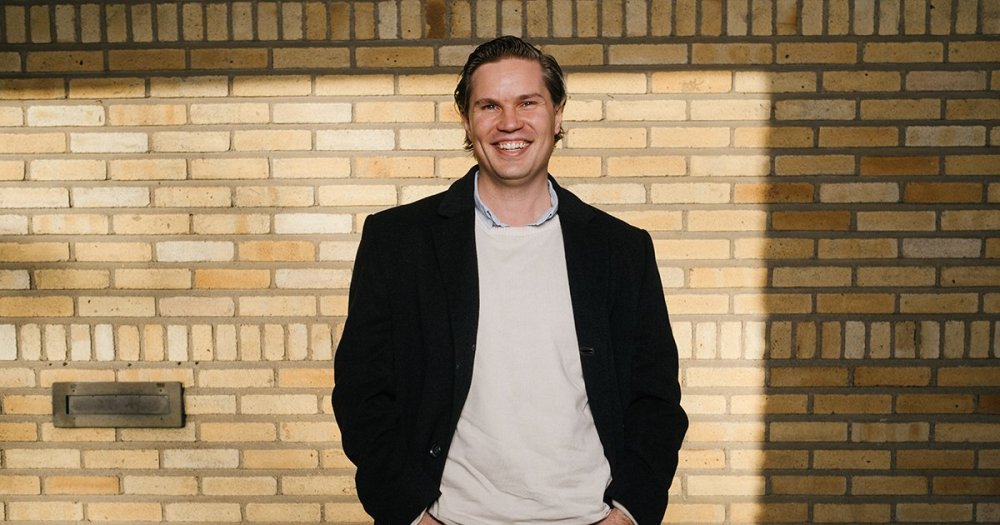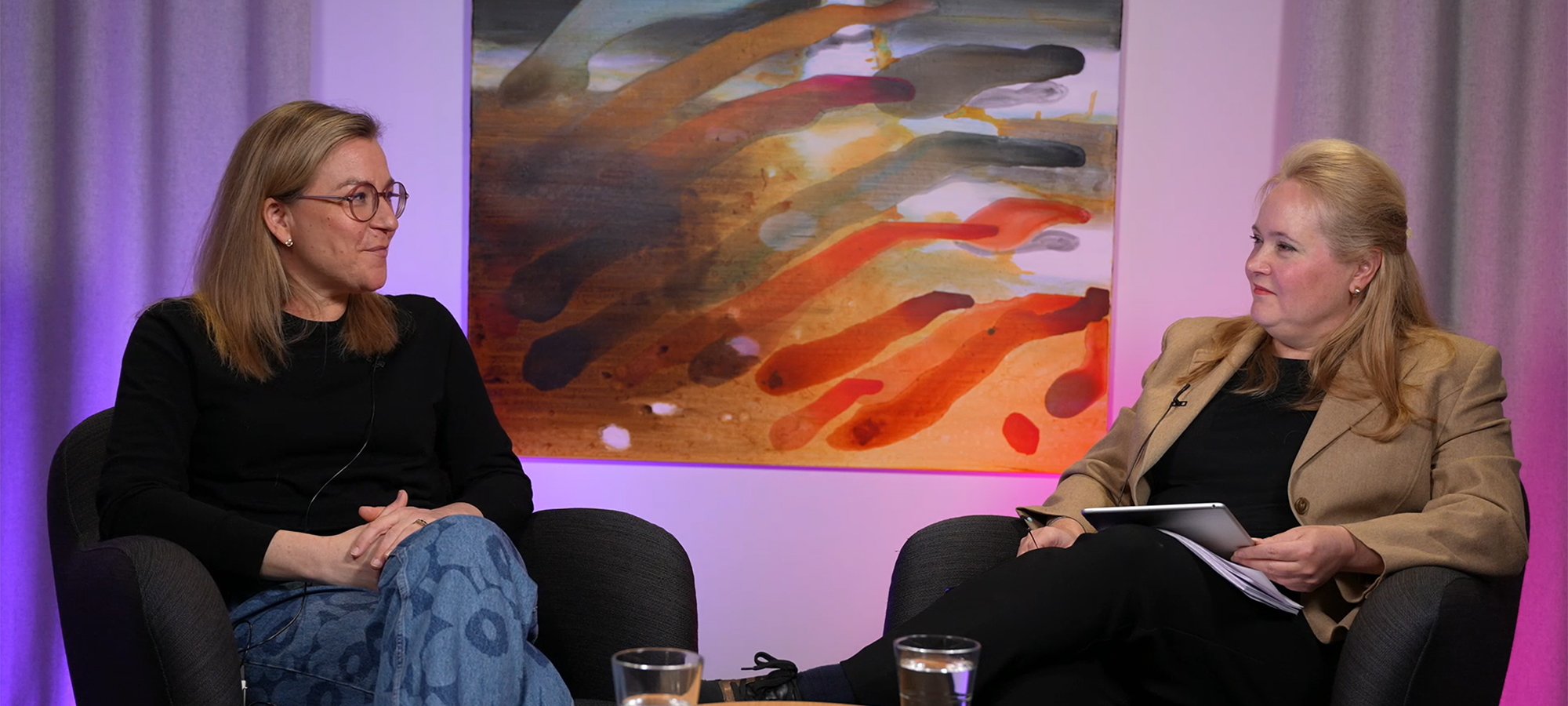5 Ways to Keep Everyone Onboard with Change
Change will only succeed if employees are engaged in the new ways of thinking and working. This is often difficult. We collected five tips on how to keep employees engaged in the midst of change and transformation.
Anu Haapala, 10.10.2024
| Long FormsThe launch of a new information system. Hybrid work changes working arrangements. A shift from top-down to servant leadership. A whole new business logic. Organizational reform. Corporate mergers harmonize work cultures. New boss, new team, new office, one change after another.
Workplaces are undergoing constant changes. These often cause fear and anxiety. Can I keep up? Will I learn enough new things? Will I keep my job? Why are these changes being constantly made? What’s behind this latest reform, and how will it affect me?
Leading change and transformation is often perceived as difficult. We asked Aalto EE’s trainers specialized in leading change and transformation how issues and people should be managed so that set goals are achieved and the whole work community stands behind the change.
1. Change stirs up emotions - don't underestimate them
“Which emotions make change difficult? What emotions could be evoked to get people onboard?”
According to Timo Vuori, Strategy Professor at Aalto University, getting employees to accept a change really is difficult. When management starts talking about something new, people either don’t pay attention or they react negatively.
Sr. Advisor, Change & Transformation and Coach Christel Berghäll stresses that change management happens everyday in the workplace. It’s important to build trust in day-to-day work: when the leaders and the employees trust each other, the organization can better cope with bigger upheavals.
It’s easier for employees to trust a leader whom they regard as competent and professional, and who by example creates a psychologically safe atmosphere that permits success, adversity, and difficulties.
Daily encounters play an important role: People draw conclusions on the basis of their everyday encounters, and their interpretations are formed from these conclusions.
“If a busy manager walks past and doesn’t say hello, a person might think ‘I’m not important’ or ‘They don’t trust me’, and this can lead to feelings of insecurity, for example,” says Berghäll.
Successful reform should always take soft as well as hard issues into account. In addition to organizational charts, future scenarios, assigning roles, and financial considerations, we must also take the influence of emotions and work culture into account. We need to think about how to make them support each other.
Emotions play a substantial role in strategy work and change. This was revealed in a study of mobile phone giant Nokia by Timo Vuori and INSEAD University Professor Quy N. Huy.

Strategy professor Timo Vuori, who has studied the former cellphone giant Nokia, points out that emotions play a substantial role in strategy work and change.
When Nokia started to lose ground in the mobile phone market as smartphones became more common, it began, stubbornly at first, to develop its own operating system, Microsoft’s Windows.
According to the study, this was due to a deep-rooted culture of fear: Managers were afraid to present alternatives to the board. When the company finally abandoned smartphones and decided to focus on its online business, the board had made a major cultural change at Nokia — it wanted to regain the management’s trust and consider alternatives to previous business operations.
Successful reform should always take soft as well as hard issues into account.
Everyone has emotions, and we can’t, or even need to try, to push them aside at the workplace. When we succeed in a project we’ve been working on for a long time, we feel elation. When a close colleague leaves, we feel sad and wistful. A phone call from a furious customer causes our heart to race and our body to stiffen.
The fact that change triggers an emotional reaction is perfectly natural, inevitable, and even necessary. Emotions have always helped humans and other animals to survive in changing environments. They also affect the way we think, interact and act.
Decades ago, worry and anger drove young people to oppose the war and launch the modern environmental movement. In 2018, they led teenager Greta Thunberg to launch a school strike on behalf of the climate, which eventually became global.
Enthusiasm and curiosity encourage us to try new things: screenwriters to use artificial intelligence and nurses to make outpatient clinic work more efficient. Being able to help a customer and see their joy motivates many of us to get up in the morning and go to work.
During change and transformation, it pays for the leader to identify the emotions that can make change difficult. And what emotions could be awakened to speed up the change and get people on board?
2. Inspire people through physical experiences and visions for change
“A dairy company should also offer a competitor’s oat milk in its staff canteen, not just its own products.”
"Physical experiences often help create enthusiasm,” says Timo Vuori. Emotions drive people to act. A leader can influence emotions by their own actions and words, and through this, influence the behavior of employees. Once we are aware of this, we can change the way in which we behave and make decisions to be able to get as close as possible to the desired outcome.
Ten years ago, Vuori studied the creation of an electric car ecosystem in a project involving several electric car sector actors. One company stuck in his mind: When the company organized a meeting to discuss its vision, it always took the listener for a ride. Teslas were not yet a familiar sight on the city streets and most people were getting behind the wheel of an electric car for the first time.
“They got really excited about driving the car, and thus also about the strategy that the guy on the seat next to them was explaining,” Vuori says.
Inspiration through new experiences also encourages innovation. A common problem for food companies, for example, is that they don’t react strongly enough to competition or begin to innovate. Exposure to alternative solutions could help.
A dairy company should also offer a competitor’s oat milk in its staff canteen, not just its own products.

“A vision for change is best formulated in a single sentence or as a picture,” says Christel Berghäll, Sr. Advisor, Change & Transformation and Coach.
As the story goes, when Apple released its first iPhone, Samsung immediately gave its 100 top executives iPhones. Whereas at Nokia’s headquarters, the iPhone was barely even mentioned.
Samsung is now Apple’s main competitor on the smartphones market. HMD Global, which makes Nokia-branded phones, has a market share of around three percentages, and Nokia itself has not made any phones for over a decade.
Changes often involve new information systems and other technical gadgets that can significantly change the way we work. AI is now becoming part of every knowledge worker’s job.
New technology is often launched in workplaces by informing people how to log in and where to find a hundred-page guide to using the system. Vuori thinks that trying something new should be made easier.
He tells me about an acquaintance who works as a development manager and always makes sure his team members have the latest AI tools on their computers. This makes experimentation as easy as possible. In meetings, the development manager shows what they’ve done with the new AI tool, and in this way inspires others to also try it out.
Sometimes gentle coercion is needed. “Whenever people try ChatGPT for the first time, for example, they are surprised by what it can do," says Vuori.
Christel Berghäll emphasizes the importance of having a clear vision for the change. It offers a picture of what the future will look like after the changes has been implemented. An inspiring change vision clarifies to the different stakeholders in the organization why they need to let go of the past and motivates them to do things in a new way.
“A vision for change is best formulated in a single sentence or as a picture,” says Berghäll.
“Of course, leaders need to understand when to inspire and when not,” she points out. The threat of redundancy doesn’t make anyone happy or motivated. When the COVID-19 pandemic changed the everyday life of workplaces, it was enough that the employees complied with the guidelines and the law.
3. Customize your message
”Mass communication doesn't work."
People who lose their jobs due to cooperation negotiations, for example, often feel that redundancies are only essential because managers want more money for themselves. Studies have shown that self-centeredness undermines trust at workplaces.
It’s important to be able to make the underlying reasons for changes understandable. When trying to make savings, it’s not enough to say that profits have fallen. We also need to say what could be done better, where there is loss, and how and what the planned measures will impact.
Good change communication is transparent: Tell employees everything you possibly can.
During changes, conflicting instructions and a lack of direction give rise to ambiguity and frustration. Clear, consistent and coherent communication is therefore worth investing in from the very start of the change process. Clear direction and guidance fuel enthusiasm. When people understand the importance of the change, they can see its purpose.
"People get frustrated if we communicate irrelevant things to them."
Berghäll believes it is important to address the classic “why” question: We need to clearly communicate why we are doing things and the result we are aiming for. Leaders have often been planning and processing changes for a longer time, and when they communicate the change to the whole organization, it’s easy for them to forget that the issue is completely new and unknown to the employees.
People interpret information through their own eyes: Those from different backgrounds understand the message in different ways. It’s worth considering how different people feel about it and basing engagement and communication on each target group separately.
Emotional reactions always stem from a person’s own perceptions, Vuori points out. That’s why it’s a good idea to keep emotions in mind when communicating information and to try to be empathetic.

Keep emotions in mind and aim at being empathetic in your communication, says Vuori.
“A poor example of leadership is when the CEO says, ‘Let’s take these measures and then we can pay three percent more dividends.’ It may be very inspiring for the CEO, but it doesn’t necessarily resonate at all with other members of the organization,” Vuori says.
He explains how it’s important to target and tailor communications toward the group at which the message is aimed. Mass communication doesn’t work.
“People get frustrated if we communicate irrelevant things to them. If their work tasks aren’t going to change and we don’t expect any changes in their activities, there’s no point burdening people with things that don’t concern them,” Vuori says.
Good change communication is a two-way, genuine dialogue. Good change leaders listen actively, ask questions, and show interest in other perspectives, says Berghäll.
4. Give it time
”All changes burden the brain.”
Especially after difficult changes, it’s important to give people enough time to recover and process things. Losing colleagues or things that are familiar causes sadness and uncertainty.
Even a welcome change burdens the brain, because things are no longer familiar or safe. Thus, adopting new working methods, business logic, and tools takes time and energy.
The amount of time needed to adapt to change is individual and depends on the situation. Some people are naturally more open to new things, while others need more evidence and concrete results before getting on board, says Berghäll.
Empathy and genuine caring are important. If people have to be made redundant, it’s important to support those who stay as well as those who leave. Those who leave should be offered concrete help to move on. Many large companies, such as Nokia and Finnair, have offered career coaching and conversion training to the employees they have made redundant, to help them find new employment opportunities.
Is it essential to get all employees on board with the change? Not necessarily.
"The business world is full of examples of situations in which opposers have been silenced or ignored."
Vuori claims that it’s good to identify who absolutely must be on board for the change to be a success. Berghäll agrees. Change management theories talk a lot about engaging “the critical mass”. Every organization has people who easily embrace change, those who resist and question it, and those who fall somewhere in between.
Often, the opposers receive a lot of attention, but it’d be worth trying to influence those who have not made up their minds yet.
“However, it’s immensely important to listen to the opposers, even if their message doesn’t come across constructively. The business world is full of examples of situations in which opposers have been silenced or ignored, which have led to drastic business implications in the long run,” says Berghäll.
“A good leader listens to understand, provides information timely and ensures all employees are provided equal opportunities to contribute.”
5. Involve everyone
"During change, we need both a communication plan and an engagement plan.”
To keep people on board we have to really involve them.
When employees are involved in the change, they become more engaged. Former US President Barack Obama said that the more we encourage participation, the better off we are. Berghäll sees a great deal of truth in this statement.
“When we’re involved, we feel a greater sense of ownership and our motivation increases.”

"It’s important to consider skills needs and skills gap as part of the change. And to ensure all relevant skills in the organizations are taken into use during the change", Berghäll points out.
In organizations, some things always come from above: for example, savings targets. A good people leader knows how to channel participation towards what employees can influence.
In her coaching sessions, Berghäll talks a lot about the need for not only a communication plan but also an engagement plan during change, one which considers the needs of different employee groups.
For Vuori, the key to engaging employees is to think about why the change is being made. If people are listened to but their ideas aren’t taken into account, they just get frustrated.
“The hardest situation is when an external change is looming, but its impact is not yet reflected in the company’s profits.”
According to Berghäll, building “skills-based organizations” is currently a particularly hot trend. It’s critical that organizations identify their employees’ current skills and that there is clear understanding of what the needed future skills are.
“It’s important to consider skills needs and skills gap as part of the change. And to ensure all relevant skills in the organizations are taken into use during the change.”
Engagement can help us find good ideas and new solutions. It’s also a way of identifying what is important to people.
A company looking to make savings should start by cutting spending on the things that matter least to people. The coffee machine or workspace that no-one ever uses can go. But a summer party shouldn’t be cancelled if people have been waiting all spring to see each other. If cancellation is the only option, we should clearly explain why the decision has to be made and what other, more unpleasant things would have to be done if the money was spent on the party.
“The hardest situation is when an external change is looming, but its impact is not yet reflected in the company’s profits,” Vuori says.
Artificial intelligence is now everywhere. Yet in many industries, traditional ways of working are still profitable. “It’s easy to be lulled into thinking that AI is not relevant to us, that our people are doing this manually and doing it well and we’re getting really good results.”
However, although management may understand the pressure to change exerted by the world and the market, this understanding doesn’t necessarily extend throughout the organization. It can be increased, for example, by psychologically safe sce- nario exercises that allow participants to play with the idea, for example: A few years have passed and our competitors have eaten into our organization’s market share. What has happened and why?
This long form article was first published in the Aalto Leaders' Insight magazine's issue number 12 in June 2024. Do you want to read more similar articles? You can find all our long forms here!
When have you led a change or transformation successfully, Timo Vuori?

Strategy Professor Timo Vuori’s greatest successes in change leadership have been while working as an external consultant.
Once he was consulting for a company with a strong head office in Helsinki but fairly independent units in different parts of Finland. There was friction between the head office and the smaller offices, and the new models developed by head office were not being implemented elsewhere in the company.
Vuori interviewed the employees and managers in Helsinki and elsewhere in Finland. He wanted to understand what was happening in the organization. After listening to the different units’ descriptions of how they are led and the views of the people at head office, he modelled their interaction dynamics.
The modelling revealed to the parties what was behind the conflict and the related misunderstandings. Empathy and understanding of others’ perspectives increased. The modelling gave the employees tools to build a better shared understanding.
“We could see people on both sides saying, hey—now I get it! That in itself was a great relief to them and brought them closer together. Then they learned to work with the new approach.”
When have you led a change or transformation successfully, Christel Berghäll?

Sr. Advisor, Change & Transformation and Coach Christel Berghäll had just started working as Senior Vice President, HR of a large company when it began cooperation negotiations.
Berghäll led the process and had to make people from all parts of the organization redundant, including some in her own team.
The workplace, its working methods, culture, and people were still mostly unknown to her.
This made the situation particularly challenging. Berghäll decided to act according to her own values as well as those of the organization during this challenging change process. She wanted to be authentic, let her emotions show and wanted to build a connection with employees and make time available to talk with them.
“I wanted to handle the situation in the best way possible. For me, this meant meeting people where they were at with the change."
People react to bad news in different ways. Some get angry and leave, slamming the door behind them. Others are so upset that they begin to cry. And some maintain a poker face, even if they’re raging inside.
A leader can’t always influence the outcome of co-operation negotiations. But they can influence how they handle the situation.
“A person may forget what was said, but they’ll never forget how you made them feel. In difficult conversations, it is important to empathize with what the person concerned is experiencing— and to ensure you make them feel they are being treated fairly and respectfully.”
During the cooperation negotiations, Berghäll’s employer at the time arranged opportunities for dialogue for the work community.
“Employees were given a lot of space to discuss their feelings.”
She later received positive feedback for handling the cooperation negotiations in a fair, human-centric and respectful way.





















